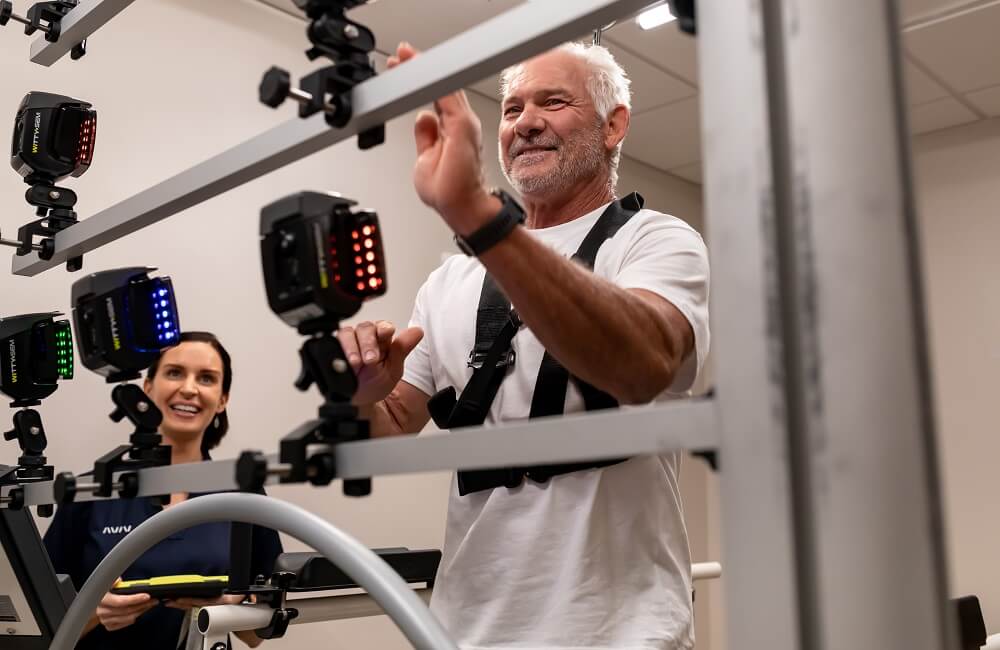
Brain Exercises for Stroke Recovery: 10 Activities, Games and Apps to Boost Cognitive Health


When most people think of exercises, they picture physical activity and movement. However, when it comes to post-stroke health, brain exercises for stroke recovery are just as essential as physical exercies. “Cognitive impairment and memory loss are common after a stroke,” making cognitive stimulation a critical part of rehabilitation.
The brain is a powerful organ, capable of learning and adapting at any age. Medical experts note, “The reality is that everyone has the capacity to develop new cells that can help enhance cognitive functions.” The more you engage your brain, the better the chances you will see cognitive improvement.
Brain exercises can unlock this potential. Below, we ouldine 10 types of brain exercises for stroke recovery, including exercises, games, and apps to support post-stroke recovery. and lifestyle activities that support rehabilitation. We also discuss the training Aviv Clinics’ post-stroke program can offer.
1. Apps for Stroke Patients: Brain Exercises for Cognitive Recovery
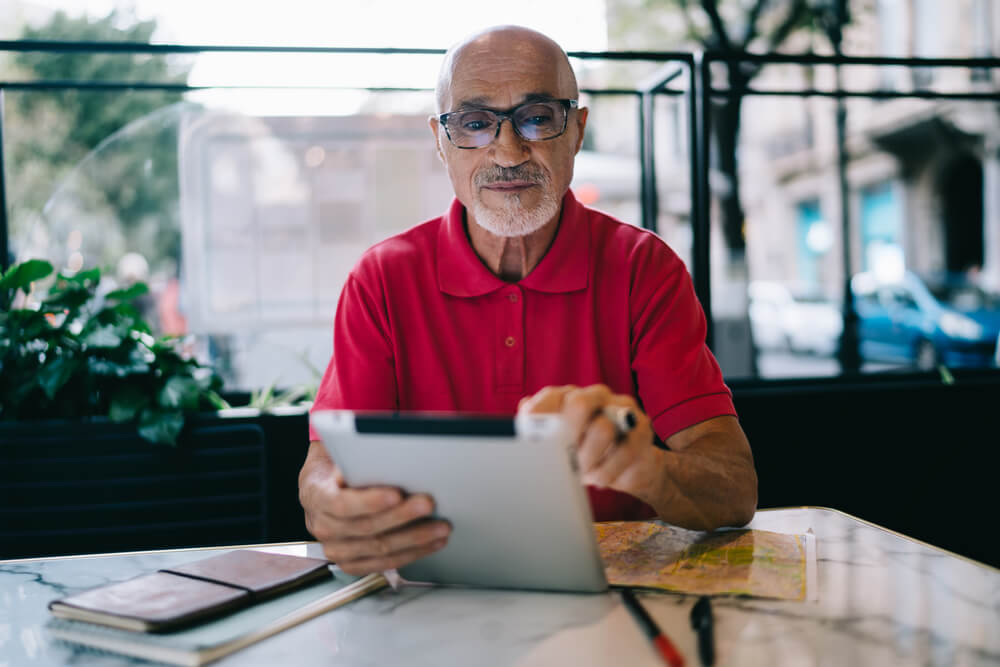
Digital applicaitons apps provide access to speech, cognitive, and psychomotor training. Though many of these apps are not specifically designed for stroke patients, they can still help with neurological rehabilitation. Recent studies have found that “mobile apps can be used to improve stroke rehabilitation” by supporting physical and cognitive skills.
One tip is to look for “psychomotor skill” apps that calibrate themselves to an individual’s motion range. These can be especially useful for stroke patients.
Here are examples of helpful devices and apps for stroke patients:
- BrainHQ is a cognitive training app. The app offers several games that help Aviv Clinics’ clients improve skills that stroke survivors may struggle with, such as memory, attention, brain speed, and navigation. You can even design your own program, choosing exercises and workouts that meet your personal interests. At Aviv Clinics, our neuropsychology team prescribes a personalized BrainHQ workout for clients in need of cognitive training.
- MindMaze has a helpful game-based digital therapy called MindMotion™ GO. It offers full-body motion capture, allowing patients to practice physical and cognitive exercises at the same time. This is exclusively used in clinical settings; you will need a physician or therapist to help you sign up for this app.
- Lumosity offers exercises for your mind with a fresh set of games daily to keep your brain consistently challenged. The app also provides reports that track your progress.
- VAST is a virtual reality rehabilitation system we use at Aviv Clinics. It offers the flexibility to work in any physiotherapy practice and helps our patients engage in moto-cognitive activities. This is exclusively used in clinical settings, and you will need a physician or therapist to help you sign up for this app.
- CogniFit features brain training that includes psychologist-developed games and a personalized program for each user, adapted to your specific needs.
Using Tech to Practice Psychomotor Skills

Because they involve both cognitive prompts and physical movement, apps and devices are great ways to improve psychomotor skills such as:
- Coordination
- Balance
- Fine motor skills
- Reaction time
Psychomotor skills are vital for everyday activities, making these particular brain exercises for stroke recovery especially beneficial for supporting independence in dressing, cooking, driving, and practicing self-care.
Keep in mind that while some free apps feature psychomotor exercises, many of these apps and devices require the involvement of a healthcare professional, such as a physician or therapist. When used in clinical settings, these technologies can have impressive results:
- In one study, post-stroke patients demonstrated significant improvements in motor function after using MindMaze’s VR-based rehabilitation programs—an average improvement of “15.4% at [their] one-month follow-up.”
- Another study found that between one and three months of “medium-high intensity computerized cognitive training showed significant improvement on global cognition for stroke patients.”
In summary, apps and devices can help post-stroke patients practice both cognitive and motor skills, and can be particularly effective under professional guidance.
2. Games for Stroke Patients: Fun Brain Exercises for Post-Stroke Rehab

While apps and devices provides structured, tech-based exercises, hands-on games and puzzles can also challenge the brain in a fun way. Incorporating these activities can also improve cognitive performance and recovery after a stroke.
Puzzles
Games like crossword puzzles, Sudoku, and word searches are excellent activities to stimulate the brain.
The most impactful of these may be crossword puzzles. Researchers specify that crossword puzzles are “superior to other brain games in improving memory.”
Let’s not forget the accessibility crossword puzzles offer: You can find them anywhere — online, in newspapers, and on smartphone apps — and they can easily be taken on the go.
Jigsaw Puzzles
Jigsaw puzzles are another excellent form of brain exercise for stroke recovery, as they help to support and improve:
- Concentration and focus
- Visual-spatial skills
- Fine motor skills
- Problem-solving
- Memory
For post-stroke patients, it’s been shown that jigsaw puzzles “can improve upper extremity fine motor skills” and increase finger strength and range of motion.
Completing a puzzle can also provide a much-needed sense of accomplishment, boosting your mood and well-being during your recovery.
Board Games
Board games often require critical thinking and teamwork.
Playing board games like Scrabble, Connect Four, or Battleship stimulates brain areas that oversee memory formation and thought processes. Games do this by:
- Encouraging high-level thinking. Board games can improve brain skills like strategic thinking, logic, attention, memory, and comparison. Researchers report that “playing non-digital games may be a positive behavior in terms of reducing cognitive decline.”
- Enhancing creativity and self-confidence. The collective nature of board games can help post-stroke patients with creative problem–solving while connecting with their friends and family.
Some of the most popular games can help improve cognitive health, including checkers, memory matching games, dominoes, and card games. However, the list is endless.
Chess
Chess, a game already associated with brain-boosting benefits, is another way to use play to support brain health.
According to Roger Miller, PhD, lead neuropsychologist at Aviv Clinics, chess can strengthen your executive function by exercising your prefrontal cortex, the “CEO of the brain.”
Regular chess games can also sharpen your decision-making skills, improve concentration, and foster creativity through strategy.
Video Games
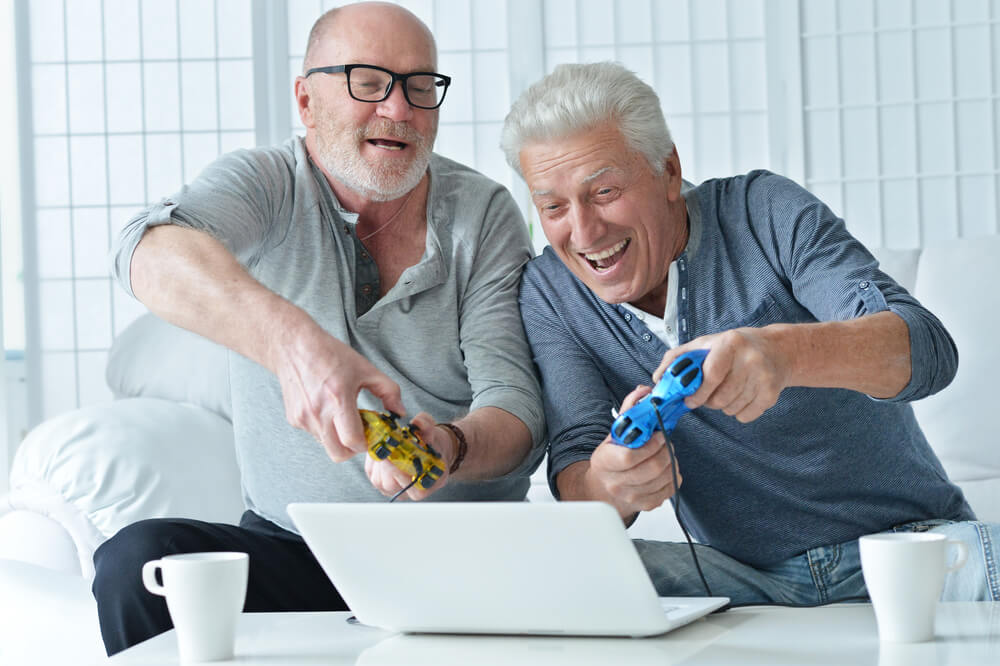
In a study where post-stroke patients played Wii Sports Resort, a collection of sports simulation mini-games:
- The group who played video games “achieved better results than the control group.”
- Among attention, processing speed, and working memory, “the attention and processing speed improved” the most.
These results illustrate the potential that video games have in supporting cognitive rehabilitation after a stroke. Like board games and puzzles, video games can offer the stimulation the brain needs to enhance critical thinking and memory.
One study even notes that motor-sensor video games could offer physical benefits. When working with a therapist, the games “allow patients recovering from a stroke to improve their motor skills and affected arm movements.”
The above games for stroke patients provide enjoyable cognitive challenges that can strengthen memory, problem-solving, and motor skills.
3. Lifestyle Activities for Stroke Patients to Boost Brain Health

Beyond digitial and board games, everyday lifestyle activities can provide valuable cognitive stimulations while keeping your rehabilitation varied and engaging. Here are some lifestyle activities for stroke patients that shake things up by offering more diverse, non-digital options that can create balance in your life.
Reading
Many brain exercises for stroke recovery focus on treating aphasia, a frustrating post-stroke symptom that interferes with your ability to read, write, and understand language. Offering more than a way to exercise language skills, reading can serve as a form of enjoyment or an escape to new worlds.
In addition to novels, the benefits of reading can be enjoyed through:
- Magazines
- Newspapers
- Online articles
- Audiobooks
Because persistent language impairments affect as many as “one in five stroke survivors in the United States,” it’s essential to read at your own pace with respect to wherever you are in recovery.
Music
Listening to music offers an emotive experience that enhances mood and improves memory. Frequently, a specific song elicits certain memories or forms new ones.
Studies note that music therapy can be a good “motor function rehabilitation” method. Listening to music or singing songs can help “promote neural plasticity,” or the ability of the nervous system to adjust itself and improve “patients’ motor function.”
Have you been interested in learning to play a musical instrument? This activity may offer additional benefits, as “listening to and performing music reactivates areas of the brain associated with memory, reasoning, speech, emotion, and reward.”
Spending Time Outdoors
Getting outside offers numerous benefits for stroke survivors, including brain health.
Just spending time in nature can help. Researchers have found plenty of evidence for the “protective effects of exposure to natural environments on mental health outcomes and cognitive function.”
While outside, there are many activities you can engage in, including:
- Gardening
- Birdwatching
- Picnicking
- Nature walks
- Beachcombing
Time spent outside in scenic areas can also reduce stress as you enjoy the calming effects of nature.
In summary, simple daily activities can offer consistent stimulation and emotional benefits for stroke survivors on their path to recovery.
4. Art Therapy: Creative Brain Exercises for Stroke Recovery

Engaging in various art mediums is a wonderful outlet for non-verbal, creative expression and a powerful brain exercise for stroke recovery that encompasses several skills.
Post-stroke patients report that art therapy can “significantly decrease depression, improve physical functions, and increase quality of life compared with physical therapy alone.”
Painting
Picking up a paintbrush can be a therapeutic and enriching way to practice fine motor skills and sharpen cognitive skills at the same time. The American Congress of Rehabilitation Medicine (ACRM) recommends painting for stroke survivors to strengthen memory, foster creative growth, practice problem-solving, and rebuild motor skills.
Photography
The Stroke Association recommends photography as a leisure activity. Take a walk around a nearby park or nature sanctuary and take some photos. Photography can be a therapeutic activity that offers a healthy and peaceful distraction. You’ll also get a chance to move your body while snapping pictures.
Dance
How does dance fit in as a brain exercise? While dance requires more movement than most items on this list, it fits in with art therapy, and there’s no need to break a sweat to reap the cognitive benefits.
Even if you’ve never been much of a dancer, it’s never too late to start. For post-stroke patients, “dance and rhythmic movements guided by music facilitate the whole-body connection and coordination.” This challenges both the brain and body at once to coordinate your movements to the music, which can also be an enjoyable exercise. Consulting with your physician before starting a physical exercise program is always a wise decision, especially considering potential risks like falls.
Painting, photography, and dance are all examples of art therapy that can offer nonverbal, creative approaches to both physical and cognitive rehabilitation after a stroke.
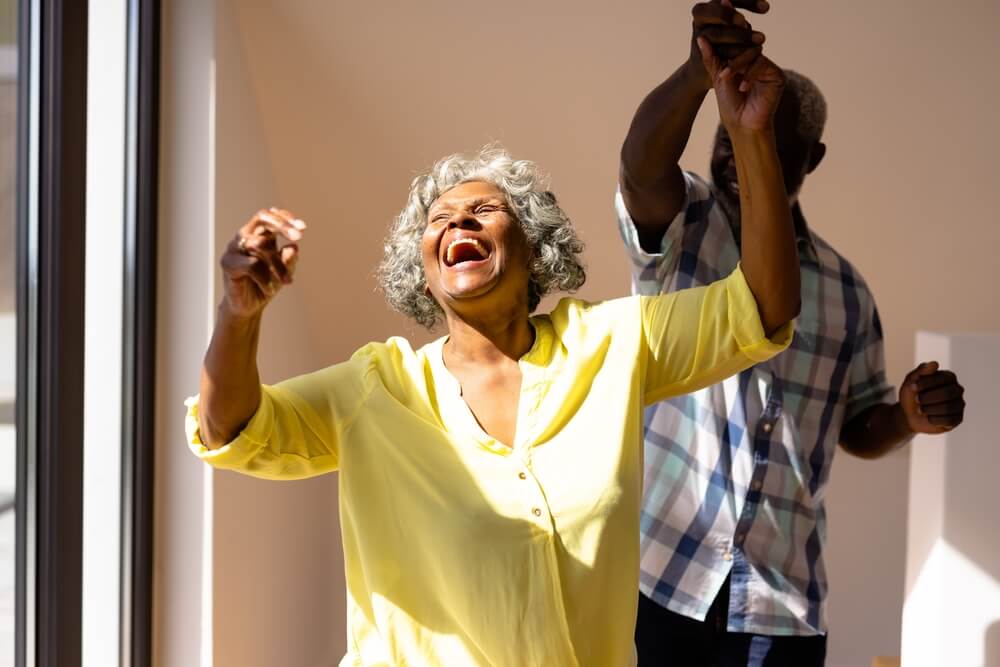
5. Improve Cognition Through Breathing Exercises for Stroke Recovery
While dedicated breathing exercises can help you slow down and take time to relax, they’re also a surprisingly effective brain exercise for your stroke recovery journey. By optimizing oxygen delivery, these exercise can enhance brain recovery and reduce stress after a stroke
Methodical breathing techniques optimize oxygen delivery throughout the body. In post-stroke patients, regular breathing exercises were found to calm the nervous system, prompting “psychological changes and improved cognitive functions.”
Several different exercises may be beneficial for stroke relief, including:
- Diaphragmatic breathing
- Box breathing
- Alternate nostril breathing
- Pursed-lip breathing
There are also several videos, podcasts, and apps that can guide you through a regimen and incorporate regular breathing practice into your routine.
Regular breathing exercises like diaphragmatic breathing, box breathing, alternate nostril breathing can ehnance cognitive function while also reducing stress in post-stroke patients.
6. Visualization Exercises and Mental Brain Training for Stroke Recovery

Visualization trains the brain similarly to physical practice. by mentally rehearsing movements and daily tasks, you can strengthen neural pathewys involved in coordination and memory. In a study where post-stroke patients used visualization techniques to picture themselves successfully completing motor tasks, participants experienced enhanced “functional rehabilitation of both upper and lower limbs, as well as for the recovery of daily activities and skills.”
This is because visualization can stimulate the same neural pathways associated with movement, coordination, and memory. To practice visualization throughout your rehabilitation journey, set aside quiet time each day to visualize yourself overcoming challenges and regaining mobility according to your goals.
Alternatively, guided visualizations led by your healthcare provider or counselor can offer personalized support and encouragement throughout the process.
Tip: Set aside quiet time daily to imagine completing tasks and regaining mobility. Because guided visualization stimulates neural pathways, it can support personalized stroke recovery.
7. Socialization: Making Connections After a Stroke
Being with others can help improve feelings of depression and isolation, which are common experiences for stroke survivors. Here are some ways you can socialize during your recovery:
- Join a support group.
- Spend time with friends and family.
- Participate in community activities.
- Connect with online forums and communities.
- Locate volunteer opportunities.
Engaging with others is not only important for brain health, but research shows that “social interaction improves quality of life and decreases mortality after stroke.” Social engagement with others provides both cognitive stimulation and emotional support.
8. Mindfulness Meditation and Cognitive Recovery for Post-Stroke Rehab

There is a large body of research connecting mindfulness practices to neuroplasticity, or the brain’s ability to adapt and recover from damage. For stroke survivors, this is a crucial consideration. The link between mindfulness meditation and neuroplasticity has implications for stroke outcomes:
- Numerous studies have found that “meditation practices have various health benefits, including the possibility of preserving cognition.”
- The practice offers post-stroke patients support, as “mindfulness skills may also raise concentration levels and support restorative, brain-healing rest in recovery from stroke.”
It may seem counterintuitive that practiced stillness could be considered a brain exercise for stroke recovery and rehabilitation, but this powerful practice can help the brain reorganize and regain important functions. Harnessing the brain’s capacity for neuroplasticity can facilitate recovery by rewiring neural pathways and compensating for damaged regions of the brain.
In summary, mindfulness practives support both cognitive recovery and neuroplasticity, both of which are important for stroke recovery.
9. Speech Therapy: Communication-based Brain Exercises
For those living with aphasia or other communication challenges, speech therapy can provide support for the physical and cognitive aspects of communication.
Speech therapy can improve overall well-being for a large number of post-stroke patients—“communication impairment occurs in 30–60% of stroke survivors.” This is largely accomplished through:
- Articulation exercises
- Language drills
- Strengthening facial muscles
- Augmentative and alternative communication devices
- Building confidence and self-assurance
Because it’s most effective when initiated quickly after a stroke, it’s important to start speech therapy, if needed, as soon as possible. Early and consistent speech therapy improves communication and overall cognitive recovery for stroke survivors.
10. Learning New Skills: Brain Exercises for Stroke Recovery and Neuroplasticity
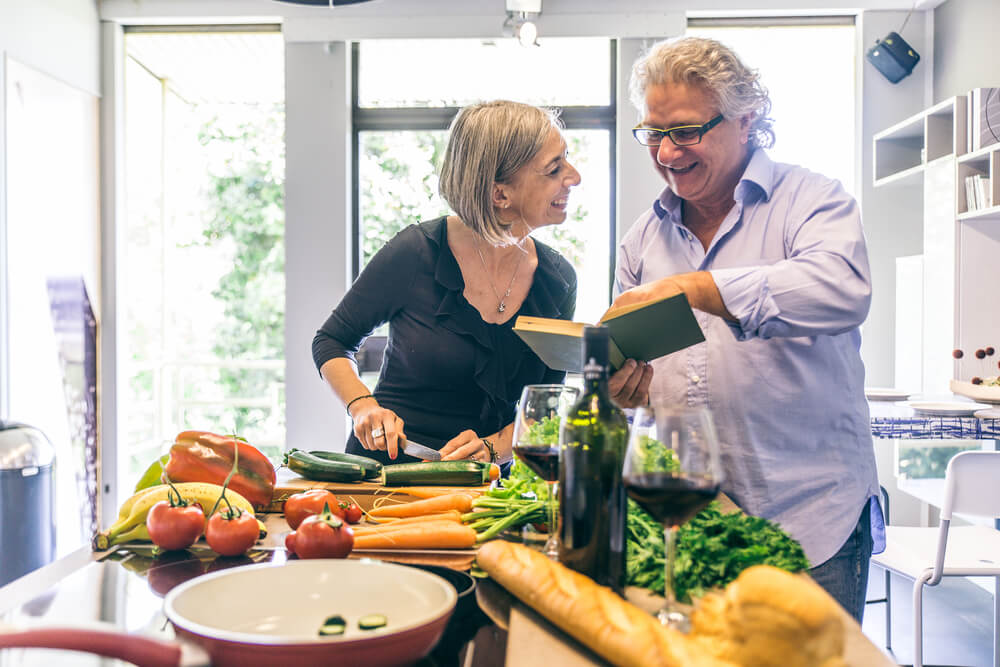
In addition to structured therapies like speech therapy, exploring new skills and hobbies can further stimulate cognitive recovery and provide a sense of accomplishment.
After a stroke, it’s normal not to feel up to doing the things you used to do. Many post-stroke patients find it difficult, with a return to normal hobbies and activities “reduced between 10% and 40%” in survivors.
While you may not want to resume your old leisure activities, now is a great time to try something new. Developing unfamiliar skills helps stimulate the brain and foster cognitive recovery.
Learning something new can challenge your brain while offering a sense of achievement with every new skill you acquire. Examples of new activities to try include:
- Playing an instrument
- Painting or drawing
- Learning a new language
- Cooking
- Trying a new exercise
- Participating in a group activity or class
Neurobics
Like aerobics for your neurons, neurobics refers to any task or activity that challenges your brain in new ways. Used as a novel brain exercise for stroke recovery, “neurobic exercise intervention could improve subjective and objective memory.”
Neurobics can be as simple as performing familiar tasks in novel or unconventional ways to stimulate different areas of the brain. For example:
- Brush your teeth with your non-dominant hand.
- Take a new route when walking or driving.
- Try a new game or puzzle.
- Change the order of a daily routine.
For recovering stroke survivors, novel tasks like neurobics and exploring new skills stretch and strengthen memory, concentration, and overall cognitive function.
Aviv Clinics’ Post-Stroke Program: Combining Advanced Therapies with Personalized Brain Exercises

By combining apps, games, lifestyle activities, art therapy, breathing, visualization, socialization and neurobics, stroke survivors can create a holistic recovery routine.
The Aviv Medical Program builds on these principles, offering a personalized, physician-guided approach to stroke rehabilitiation. Aviv’s post-stroke recovery program is targeted to those in the chronic post-stroke phase, typically six or more months after the incident. This program may entail cognitive exercises in addition to physical and nutritional training.
The Aviv Medical Program consists of a physician-developed plan that can include the following (depending on the client’s needs):
- Cognitive training
- Physical training and/or physical therapy
- Dietary coaching
- Hyperbaric oxygen therapy (HBOT)
To determine the best course for you according to your goals, we create a personalized program to support your well-being based on the results of a comprehensive evaluation. At our medical team’s discretion, this evaluation may include:
- In-depth review of health history
- Comprehensive physical exam
- Highly advanced brain imaging scans
- Neurological and neurocognitive tests
- Body composition analysis
All components of this plan are included in a physician-designed program tailored to the needs and goals of each patient.
Cognitive Training Program
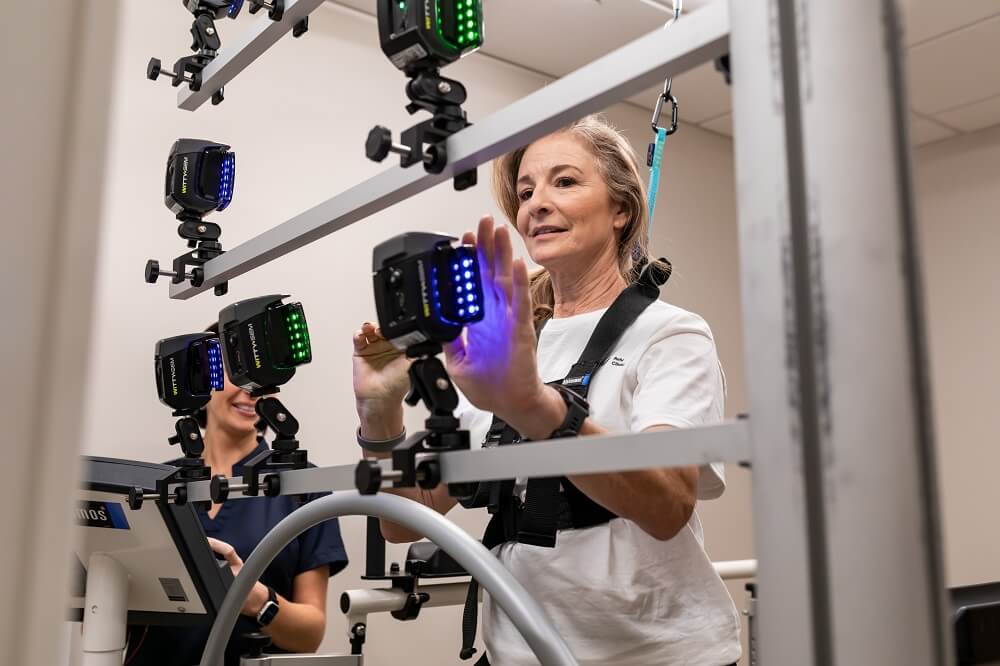
For clients in need of cognitive training, this portion of the Aviv Medical Program is performed both inside and outside our hyperbaric oxygen suites. During HBOT sessions, your brain and body unlock their regenerative mechanisms through the use of cognitive training exercises like BrainHQ. This helps you become more receptive to other forms of therapy.
As part of your treatment, you may also complete our unique cognitive training regimen while exerting yourself physically on the cutting-edge h/p/cosmos medical treadmill. Research shows this combination of physical and cognitive effort, also known as dual task training, maximizes the benefits of the Aviv Medical Program, taking your brain and body to the next level.
Post-stroke patients can benefit from this combination. In one study, “dual task training effectively improved upper extremity function and the performance of daily activities in chronic stroke patients.”
During the assessment process, each client receives a thorough evaluation to identify specific areas of strength and areas for improvement. Tailored cognitive exercises are then used to target areas of need, such as:
- Memory
- Information processing
- Attention and focus
- Executive functioning
Combining our unique HBOT protocol with a combination of body and brain exercises for stroke recovery brings significant benefits for stroke survivors at various stages: “HBOT can lead to significant neurological improvements in post-stroke patients even at chronic late stages.”
Each client’s Aviv Medical Program is physician-designed, based on comprehensive evaluation, including health history, brain imaging, neurocognitive tests and other assessments. Combining a specialized, evidence-based HBOT protocol with targeted brain and body exercises can produce significant neurological improvements.
After Cindy, a stroke survivor, learned about the Aviv Medical Program, she underwent a transformation that now allows her to lead a more independent life.
Watch Cindy’s story:
Find Hope with Aviv Clinics
Life after a stroke can be challenging. A stroke can suddenly strip away the capabilities we take for granted. Support, trust, and consistency are vital to getting back to optimal health. The medical team at Aviv Clinics offers all three elements while crafting a personalized rehabilitation plan specifically for you.
There is hope after a stroke. If you’re ready to regain your cognitive and physical independence, contact us. Our physicians would be happy to discuss how Aviv Clinics’ program, including brain exercises for stroke recovery and personalized therapies like our unique hyperbaric oxygen protocol can help you rebuild strength, memory and confidence.
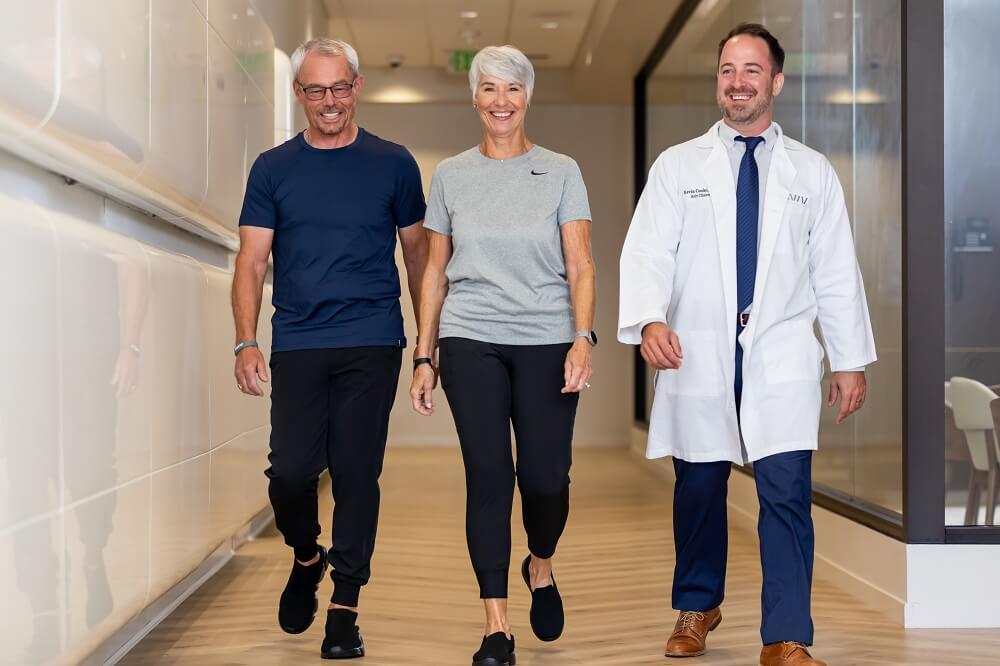
Frequently Asked Questions about Cognitive Exercises for Stroke Recovery
Are there any potential risks or limitations associated with brain exercises for post-stroke recovery?
Brain exercises for stroke recovery are a non-invasive, low-risk option for post-stroke rehabilitation. It’s important to follow your doctor’s guidelines, especially in the early stages of recovery. Keep in mind that the effectiveness of brain exercises may depend on individual differences and access to specific resources.
How frequently should brain exercises be practiced for optimal results?
How often you perform brain exercises for stroke recovery depends on your needs and the specific exercises performed. Because the brain responds well to consistency and regular stimulation, many experts recommend practicing exercises frequently, as often as daily, but ideally several times per week. Always consult your physician for the ideal frequency.
Why are brain exercises important for post-stroke recovery?
Brain exercises are important for post-stroke recovery for several reasons, including:
- The potential for neuroplasticity
- Cognitive rehabilitation
- A sense of engagement and accomplishment
- Reduced risk of cognitive decline
The use of brain exercises for stroke recovery can also provide an enjoyable way to approach rehabilitation in addition to other treatments, exercises, and therapies.
Can brain exercises be integrated into post-stroke rehabilitation programs?
Yes, structured brain exercise programs can and should be incorporated into post-stroke rehabilitation programs. This can provide a structured approach to cognitive rehabilitation, including various brain exercises and training activities tailored to each person’s needs and goals. Healthcare professionals can provide valuable guidance and feedback for brain exercise programs to help stroke survivors achieve success through their rehabilitation journey.
Last Update: September 24, 2024
Aviv Medical Program provides you with a unique opportunity to invest in your health while you age



